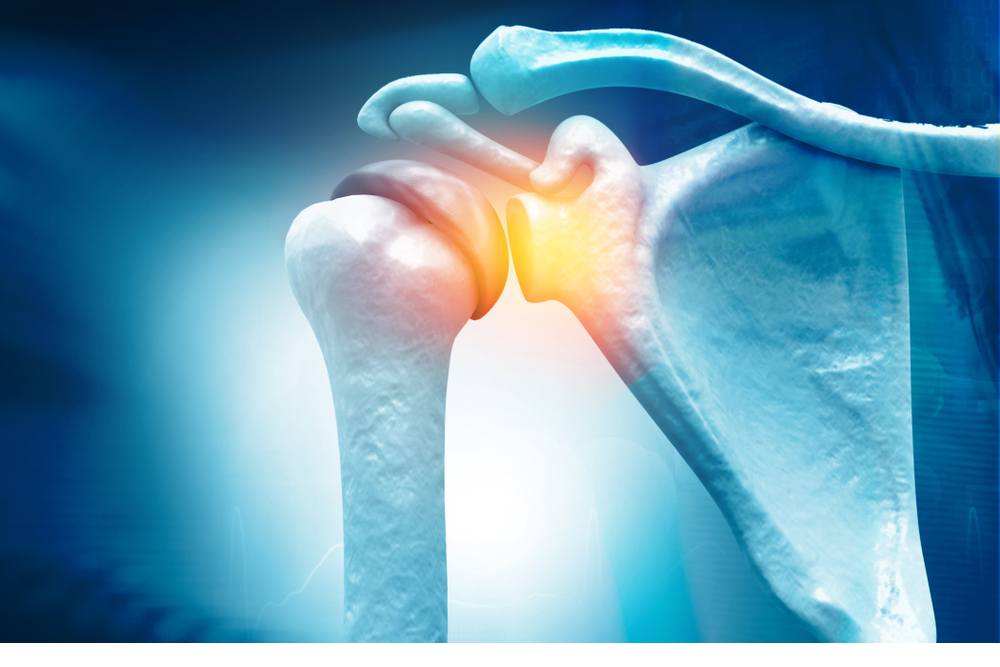 One universal truth is that you never know how much you use an arm or leg until you injure it. Having upper arm pain following a car accident injury can impact your ability to work, perform activities at home, exercise, and enjoy your social life. An arm injury is particularly difficult if it occurs in your dominant arm. 22% of car accidents resulted in injuries to the upper arm, with 82% occurring in passengers. Regardless of what the arm injury is and how it happened, seeing the right care provider makes all the difference in recovery and restoration of health. The doctors at AICA Atlanta are skilled at treating car accident injuries of all kinds. Some of those possible arm injuries are discussed below.
One universal truth is that you never know how much you use an arm or leg until you injure it. Having upper arm pain following a car accident injury can impact your ability to work, perform activities at home, exercise, and enjoy your social life. An arm injury is particularly difficult if it occurs in your dominant arm. 22% of car accidents resulted in injuries to the upper arm, with 82% occurring in passengers. Regardless of what the arm injury is and how it happened, seeing the right care provider makes all the difference in recovery and restoration of health. The doctors at AICA Atlanta are skilled at treating car accident injuries of all kinds. Some of those possible arm injuries are discussed below.
Anatomy of the Upper Arm
To better understand how a car accident injury to the upper arm may occur, it is important to know the anatomy of the arm itself.
The upper arm consists of a single bone, the humerus, which spans from the elbow to the shoulder, and muscles, ligaments, and tendons. Underlying all of these structures are nerves to operate and feel the limb, as well as blood vessels that supply oxygen-rich blood to tissue and carry depleted blood away. The humerus connects distally (furthest from the body) at the elbow joint and proximally (closest to the body) at the shoulder joint.
The shoulder is one of the most complicated joint systems in the body, comprised of the junction of the humerus (the long bone in the upper arm), the scapula (the shoulder blade), and the clavicle (the collar bone). These three bones are united by cartilage, tendons, and ligaments. Seated between the bones is a shallow socket coated with cartilage, called the glenoid labrum, that allows the shoulder to move in a rotating movement similar to the hip. Parts of the joint are surrounded by fluid-filled sacs called bursae.
The elbow is a hinge joint that sits midway between the hand and shoulder. There the ulna and the radius meet the humerus to form the elbow. Like the shoulder, the elbow contains nerves, ligaments, and tendons that all affect function and can be injured in a car accident. This is particularly true when a passenger reaches out towards the dashboard for stabilization in a crash.
Fractures
 While humeral fractures in car accidents aren’t as common as fractures in the lower arm (19% vs. 22%), when they happen, they can lead to temporary disability that can interrupt life substantially. Severe fractures of the humerus may require surgical repair to stabilize the bone fragments. Fractures have the ability to tear through muscles, nerves, blood vessels, and skin, which all may need repair as well. Due to the forces needed to break the humerus in a car accident, humeral fractures are also indicators that there may be more severe injuries to the abdomen and spine that require evaluation.
While humeral fractures in car accidents aren’t as common as fractures in the lower arm (19% vs. 22%), when they happen, they can lead to temporary disability that can interrupt life substantially. Severe fractures of the humerus may require surgical repair to stabilize the bone fragments. Fractures have the ability to tear through muscles, nerves, blood vessels, and skin, which all may need repair as well. Due to the forces needed to break the humerus in a car accident, humeral fractures are also indicators that there may be more severe injuries to the abdomen and spine that require evaluation.
Fractures are usually very painful and will present with different symptoms based on their severity. A mild fracture, usually a crack in the bone that does not go all the way through, may not be readily obvious and will take advanced imaging to notice. A compound fracture, which is a complete break in the bone leading to two separate pieces, will be grossly visible immediately. Some fractures will puncture the skin; others will not. Some result in crushed pieces of bone, sometimes called a burst fracture.
Dislocation
Sometimes when forces land just right on a joint, instead of the bone breaking, the two connecting bones of the joint move apart violently, creating a temporary dislocation as the displaced bones no longer form a functional joint. The bone(s) that are out of place are often visibly deformed, are often very painful, and do not function. Dislocations of the elbow or the shoulder bones can occur in a car accident and require specialized medical care to correct.
Tendon Injuries
The tendons that connect the biceps muscles to the shoulder are the proximal biceps tendons, which have two branches that attach the short and long heads of the biceps. The rotator cuff is a complex grouping of several tendons that secure the humerus into the shoulder joint and allow for a full range of movement. Those tendons are the subscapularis, supraspinatus, infraspinatus, and the teres minor. The supraspinatus tendon is responsible for lifting the arm upwards over the shoulder and is the most commonly injured tendon in the shoulder. While any of these tendons can tear in a car accident, the most common upper arm pain associated with them is due to inflammation, which is called tendonitis. This can happen from overuse but also from trauma, such as a car accident. If the tendon is overly stretched or pulled, it can cause a strain, which can be very painful. Detecting such injuries requires imaging studies and advanced assessment.
Muscle Injuries
 The biceps brachii and triceps brachii are the muscles that move the upper arm, with the deltoid and many others responsible for moving the shoulder joint itself. Any injury to these muscles can affect the functioning of the upper arm, particularly if there is a tear or rupture of the muscle. Strains can occur if the muscle is overly stretched or pulled. While these injuries are less severe than some, they also may lead to temporary disability of the extremity.
The biceps brachii and triceps brachii are the muscles that move the upper arm, with the deltoid and many others responsible for moving the shoulder joint itself. Any injury to these muscles can affect the functioning of the upper arm, particularly if there is a tear or rupture of the muscle. Strains can occur if the muscle is overly stretched or pulled. While these injuries are less severe than some, they also may lead to temporary disability of the extremity.
Nerve Injuries
The nerves that control and sense the upper arm originate first from the spinal cord, primarily from the cervical spine at the C5-C8 levels. This means that while pain in the upper arm may be due to injury in the actual arm, it can also be from the nerves in the spinal cord. Compression of any of the nerves coming from the spine and to the arm can lead to pain and dysfunction. For this reason, the spine needs to be assessed when considering the causes of upper arm pain.
Nerves can also be crushed between bones when they move out of place or severed by fragments of broken bones during an acute traumatic injury. This can cause loss of use or sensation in an extremity and needs immediate medical attention by a skilled clinician. Long-term inflammation of nerves can lead to chronic pain after car accidents.
Blood Vessel Injuries
Blood vessels carry oxygenated blood from the heart to the tissue that relies upon it to survive and function. Then they carry the blood back to the heart after delivering their precious cargo. If a blood vessel is severed, crushed, or obstructed by a clot, the oxygenated blood cannot get to the tissue it is intended to reach. This can lead to the death of that tissue, extreme pain, and disability. If a muscle is injured within the upper arm, swelling occurs with nowhere to go, then that pressure can compress blood vessels to the point they collapse. This is called compartment syndrome and is a medical emergency. Preventing such complications is one reason to seek immediate medical care after a car accident.
Bursitis
The shoulder joint has several small joints that are surrounded by bursae, small capsules that contain a lubricating fluid. If those capsules are pressed heavily between bones moving with force, it can tear or inflame the sac. This leads to a condition called bursitis, which is inflammation of the bursae. It can be painful and prevent the normal function of the shoulder until resolved.
Sprains
 Sprains occur when ligaments are stretched, pulled, or twisted excessively. There are three main ligaments in the shoulder; the superior, middle, and inferior glenohumeral ligaments. Because a sprain affects the ligaments that connect two bones together, a sprain in the shoulder can result in a great deal of pain and dysfunction. These injuries tend to occur more in sports and athletics, but can happen in car accidents, particularly if someone is bracing themselves with an arm on the dashboard.
Sprains occur when ligaments are stretched, pulled, or twisted excessively. There are three main ligaments in the shoulder; the superior, middle, and inferior glenohumeral ligaments. Because a sprain affects the ligaments that connect two bones together, a sprain in the shoulder can result in a great deal of pain and dysfunction. These injuries tend to occur more in sports and athletics, but can happen in car accidents, particularly if someone is bracing themselves with an arm on the dashboard.
Signs and Symptoms
These are the signs and symptoms to look out for, and these indicate injury to the upper arm:
- Pain
- Swelling
- Bruising
- Heat/Redness
- Inability to Use the Arm
- Inability to Use the Shoulder
- Cold or Pale Hand/Forearm
- Weakness in the Arm
- Numbness or Tingling in the Hand/Forearm/Upper Arm
The upper arm is vital to normal daily functioning at work, home, and in society. Anyone who has ever injured it before will tell you that every movement you make causes pain if there is an injury there. Seeking prompt, skilled care is critical to having good outcomes and resuming normalcy as soon as possible. Contact the doctors at AICA Atlanta to let them help you on the road to recovery.
